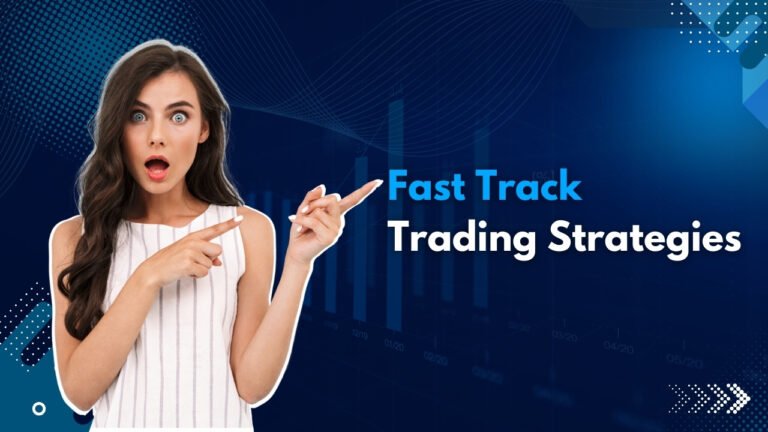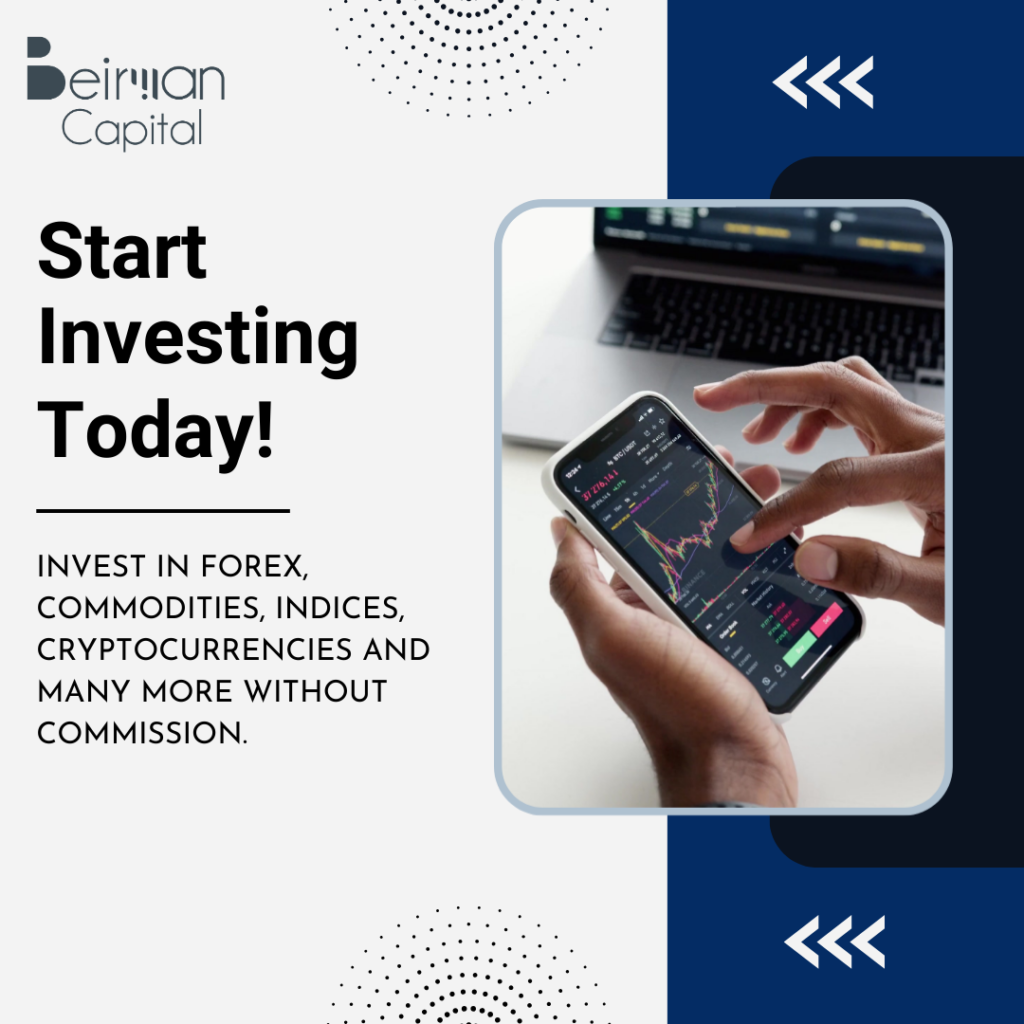Fast Track Trading Strategies For Fast Track Trader & Funding
Fast track trading allows a fast track trader to open & close trades quickly for instant profits. Get expert tips & fast track funding for maximum returns
Table of Contents
Trading is a career that can give you quick returns, even within a short duration. Many traders have made significant money in the market within days, minutes, hours, or seconds. With the right fast track trading approach, traders can maximize their earnings efficiently.
Most people enter the market with the aim of making money quickly. Well, you can do so. However, for that purpose, you need an effective fasttracktrading strategy. Fast track traders often use advanced techniques to capitalize on short-term market movements.
Confused? No need to worry. Beirman Capital is there to help you. In this blog, we will learn about top fast track trade and fast track funding strategies and tips to use them for maximum returns. Whether you’re interested in ftt trading, ftt funding, or trading with a fast track trading prop firm, understanding these strategies is crucial for success.
What is Fast Track Trading?
Fast-track trading refers to opening and closing trades in short duration to take advantage of short-term price fluctuations and withdraw the profit quickly. Traders working with a fasttrack trading model often prefer firms like ftt prop firm to access capital and trading opportunities.
In the financial market, asset prices rise and fall significantly, even in a short duration. Fast track traders aim to take advantage of these short-term price fluctuations. Platforms specializing in fast track trading and best fasttracktrading strategies provide traders with the necessary tools to make informed decisions.
Such traders keep a watch on economic, geopolitical, and overall market conditions to identify sudden movements. Also, they organize the technical analysis of historical price patterns to identify short-term trading opportunities and trade accordingly. Whether trading with a fast track trading prop firm or executing strategies independently, having a structured approach is key to success.
Top 4 Fast Track Trading Strategies
Do you want to try fast track trading but do not know which strategy to use? Here are the top approaches to quickly buy or sell financial assets with their pros and cons. It will help you in deciding which one to go for:
Scalping
Scalping is the fastest scalping strategy for trading products such as forex scalping, commodities, indices, stocks, and other financial instruments. Under this, traders use a scalper tool to buy or sell assets for a few minutes to seconds and make money.
A scalper generally aims for a profit of 1 to 5 pips per trade and can place up to 100 trades in a day. Many traders wonder, “Is scalping legal?” The legality depends on the region and broker policies. Finding the best broker for scalping options is crucial for effective execution.
For those interested in options trading, learning how to scalp options is essential, as scalp options involve rapid buying and selling. Traders often refer to scalp trading books to refine their strategies. The concept of price scalping also plays a key role in identifying short-term profit opportunities.
Day trade scalping is a common approach among active traders. New traders often ask, “What does it mean to be scalped?” In trading, it refers to quick, small gains that accumulate over time. Learning how to scalp trade effectively requires practice, market awareness, and the right platform. In the forex market, trader en scalping refers to those who specialize in this high-frequency trading style.
It is a highly advanced approach to trade in the financial market. It requires an in-depth understanding of the market, quick decision-making skills, and technical analysis knowledge to practice.
Pros:
- Small holding periods and quick profit withdrawal.
- High profit probability.
- Don’t need to look at fundamental market conditions.
- High-frequency trading strategy.
Cons:
- Not suitable for trading low-liquidity assets.
- High risk of losing money.
- Limited time for making trade decisions.
- Psychological stress.
Day Trading
Day trading is when a trader opens and closes a trade within a day. Day trading for beginners can be an excellent way to learn short-term trading strategies. How to start day trading? Traders need to develop a strategy, manage risk, and select the best trading platform for day traders to execute trades efficiently.
Day traders can place up to five trades in a day. The time frame can be a few minutes to hours. However, a trade should be closed within a day. Many beginners refer to day trading books like “Day Trading for Dummies” to understand market dynamics.
Day trading can be an alternative for scalping. The trade numbers here are fewer, so traders will get proper time to make trade decisions. Those exploring day trader jobs may find opportunities with proprietary firms or hedge funds. How to get started day trading? One must open an account, learn technical analysis, and practice on a demo platform before committing real funds.
Traders with funded accounts sometimes ask, “Why does my Tradeday funded account not work anymore?” This can happen due to rule violations, drawdown limits, or platform issues. It’s essential to follow trading guidelines and maintain proper risk management to keep the account active.
Pros:
- No overnight charges.
- Flexibility.
- Ease in entry and exit trade.
Cons:
- Requires proper time dedication.
- Significant trading costs.
Arbitrage
Arbitrage is another fast-track trading strategy involving quick asset buying and selling. Traders engage in arbitrage trading strategies across a range of assets online on multiple platforms.
You can observe minor changes in asset buying and selling prices on different platforms at the same time. Under arbitrage trading, traders take advantage of these price differences. What is assignment arbitrage? It refers to the process of leveraging these pricing inefficiencies for profit. Arbitrage meaning revolves around capitalizing on these price variations across markets.
Traders buy assets from a platform where the price is low and sell the same asset on a platform where the price is high. They earn the difference between the buying and selling price as profit, which contributes to their earnings on arbitrage. The arbitrage business model is built on executing these trades efficiently.
For those looking for the best arbitrage trading platform, selecting the right broker is crucial. Identifying the best arbitrage opportunities helps maximize profits. Engaging in arbitrage deals requires a keen understanding of market movements and regulations. The arbitrage definition encapsulates these core concepts.
Pros:
- Portfolio diversification.
- Negligible risk.
Cons:
- Time barriers.
- Limited opportunities.
- Regulatory risks.

Algorithmic Trading
Algo trading is the buying and selling of financial assets using automated software. The strategy is ideal for entering and exiting quickly. Traders can organize market analysis, backtest the strategy, identify opportunities, and place trade automatically.
The automated tool and software work based on predefined rules and criteria. Algorithmic trading strategies allow traders to execute multiple fast-track trades efficiently. Machine trading and futures trading algorithms are commonly used for automated execution in financial markets. Traders can also explore algorithmic options trading and automated futures trading to diversify their strategies.
Platforms like algo exchange provide tools for seamless execution, while traders often check trade algo reviews to assess platform performance. Understanding trade algo cost is essential for evaluating profitability. A common question among traders is, ‘Is algorithmic trading profitable?’ The answer depends on strategy effectiveness, market conditions, and execution speed.
Pros:
- Requires limited involvement.
- No delays in trade executions.
- Automated trading alerts.
- Efficiency, precision, and speed.
- Specialized strategies like index algo and algorithmic options trading enhance performance.
Cons:
- Complexity.
- Network issues and errors.
Tips for Using Fast Track Trading Strategies
The trading plan is a must, especially with high-frequency trading strategies, as such styles involve quick decision-making. Traders should prepare a fast track trading blueprint defining what and how to trade.
- Traders should set strict fast-track trading rules. Consider capital and market expectations when framing these rules and stick to them for entry and exit decisions.
- With quick profit, traders can also suffer quick losses. So fast track traders should follow proper risk, money, and leverage management rules to minimize losses and protect their accounts.
- Choosing the right broker is crucial. A trader needs a fast track trading platform with exceptional execution speed.
- Emotional control is key. Avoid letting greed, stress, anger, or fear affect trade decisions. Maintain discipline and the right mindset for effective results.
Bottom Line
Fast track trading can give you high profit and quick withdrawal. However, traders should remember that not all traders can use these strategies effectively.
A significant risk is involved in fast trading, and traders can suffer losses. Continuous learning, analytical skills, proper psychology, and effective strategy are a must for success.
Proper practice is essential before starting actual trading. Fast track traders should open a demo account to practice these strategies and ascertain their suitability.
At Beirman Capital, we provide demo account facilities to let traders try and test our services. You can also try different strategies on our platform. Contact us to get started today!
FAQ
How does fast-track trading work?
Fast-track trading refers to opening and closing trades in short duration to take advantage of short-term price fluctuations and withdraw the profit quickly.
What is the 20 rule in fast-track trading?
The 20% rule in fast-track trading states that the total profit should not be 20% of a single day’s profit during withdrawal.
What is the maximum withdrawal from fast-track trading?
The maximum drawdown is -5% with fast-track trading strategies.
How much money can you get from trading?
There is no specific amount. The trading profit depends on financial instruments, trading capital, time frame, risk and many other factors.
What is the maximum withdrawal rate?
The maximum withdrawal rate depends on the platform. You need to watch the guidelines to identify the maximum withdrawal rate.
Get Complete Forex Trading Assistance


